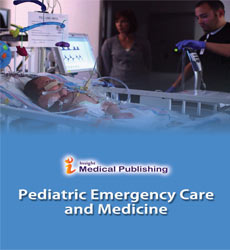Abstract
The Prevalence of Serious Bacterial Infections in Neutropenic Immunocompetent Febrile Children
Context: Febrile neutropenic immunocompromised children are at a high risk of Serious Bacterial Infections (SBI). Objective: This systematic review and meta-analysis report the prevalence of SBI in healthy children with febrile neutropenia. Data source: PubMed, EMBASE, and Web of Science from their inception to August 2020. Study selection: Patients with an Absolute Neutrophil Count (ANC) <1000 cells/ mm3 up to 18 years of age presenting to the ED with a chief complaint of fever (temperature >38.0 C) and who had a workup for SBI as defined by each study. Data abstraction: Data from individual studies was abstracted by a subset of the authors and checked independently by the senior author. Any discrepancies were adjudicated by the joint agreement of all the authors. We calculated the prevalence of SBI by using the number of SBI’s as the numerator and the total number of febrile events in patients as the denominator. Bias in our studies was quantified by the Newcastle Ottawa Scale. Results: We identified 2,066 citations of which five studies (2269 patients) met our inclusion criteria. None of our reviewed studies consistently tested every included patient for SBI. Spectrum bias in every study resulted in a wide range of the SBI prevalence of 1.9% (<0.01% - 11%) similar to non-neutropenic children. Limitations: All of our studies were retrospective and many did not consistently screen all subjects for SBI. Conclusion: If the clinical suspicion is low, the risk for SBI is similar between febrile healthy neutropenic and non-neutropenic children.
Author(s):
Rosy Hao, Mona Saleh1,2, Tian Liang, Neh Molyneaux, Isaac Gordon, Chiemelie Anyachebelu, and Richard Sinert
Abstract | PDF
Share this

Google scholar citation report
Citations : 50
Abstracted/Indexed in
- Google Scholar
- International Committee of Medical Journal Editors (ICMJE)
- Secret Search Engine Labs
Open Access Journals
- Aquaculture & Veterinary Science
- Chemistry & Chemical Sciences
- Clinical Sciences
- Engineering
- General Science
- Genetics & Molecular Biology
- Health Care & Nursing
- Immunology & Microbiology
- Materials Science
- Mathematics & Physics
- Medical Sciences
- Neurology & Psychiatry
- Oncology & Cancer Science
- Pharmaceutical Sciences

